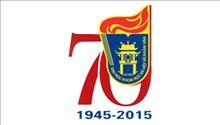
After the Government's Decree on the establishment of Hanoi National University, on August 16, 1995, the Minister of Education and Training issued a decision to appoint Rectors of member universities under Hanoi National University, in which, Associate Professor, Dr. Phung Huu Phu, former Party Secretary, Vice Rector of Hanoi National University, held the position of Rector of the University of Social Sciences and Humanities. Since becoming an independent unit (September 1995), the University of Social Sciences and Humanities has gone through 4 terms of Rectors: Prof. Dr. Phung Huu Phu, Assoc. Prof. Dr. Pham Quang Long, Assoc. Prof. Dr. Pham Xuan Hang and Prof. Dr. Nguyen Van Khanh.
In 1995, when it became an independent unit, the school had 10 faculties, 4 affiliated departments and 4 research centers.
Based on the staff and to meet the human resource needs of society, in the first 3 years, the School established 8 new faculties/departments: In 1995: Faculties of Tourism Studies, Oriental Studies, International Studies, Political Science; In 1996: Faculty of Linguistics, Archival Studies, Information - Library; In 1997: Faculty of Psychology.
Due to the development needs of Vietnam National University, Hanoi, from 1999 to 2009, 7 units separated from the University of Social Sciences and Humanities to become units under Vietnam National University, Hanoi, including: Faculty of Economics, Faculty of Law, Information Center - Library, Marxist-Leninist Center and Faculty of National Defense Education.
During this time, the School established a number of additional training units such as the Department of Management Science (2002), now the Faculty of Management Science, the Department of Anthropology (2010), now the Faculty of Anthropology, and many new research centers, contributing to the formation and development of a research university, meeting the expectations of the country's education.
At present, the whole school has: 16 faculties, 10 functional departments, 12 research and training service centers, Anthropology Museum, Science and Tourism Service Company, Institute of Policy and Management Research.
1.2. About staff
Identifying high-quality, highly qualified human resources as the key and strategic factor determining the development of a university, the Party Committee has issued an important Conclusion onPromote training and development of staff towards international standardsThis conclusion is a guideline for implementing many positive and focused policies and demonstrating strong investment in staff development activities.
In order to achieve the strategic goal of the school, which is to strive to become a center for high-quality undergraduate and postgraduate training and research in social sciences and humanities, gradually integrating into the ranks of advanced universities in the region and the world, the building of a team of staff with sufficient quantity and good expertise is always considered a vital task by the school.
One of the strengths of the School is that it has inherited a team of both virtuous and talented cadres and lecturers from the former Hanoi University of Science. This team of cadres and lecturers not only plays a core role in teaching and scientific research, but is also responsible for training young cadres and lecturers.
Overall, the number of staff of the School has not changed much, always fluctuating between 450 and 520 people, including about 350 to 380 lecturers. Currently (September 2015), the School has 528 staff, including 370 lecturers.
Currently, the School has 351/370 lecturers with postgraduate degrees (94.9%), including 199 PhDs (53.8%), has 6 professors and 91 associate professors (accounting for 26.2% of total lecturers); there are 100 lecturers doing PhD and 11 are HVCH. With the above team development results, the rate of staff with postgraduate degrees and scientific titles has reached and exceeded the target set by the 26th Party Congress for the 2010-2015 term. In addition to the number of permanent staff, the School has attracted a team of part-time lecturers of 131 people, including 11 professors, 54 associate professors, doctors, 46 doctors and a number of foreign lecturers. The School's scientific staff has made an extremely important contribution to the successful implementation of key tasks of training, scientific research and international cooperation in the past term and in the coming time.
The number of lecturers with bachelor degrees is decreasing. Currently, the whole school has very few lecturers who are approaching retirement age and are not participating in the postgraduate training program. The number of lecturers with doctoral degrees is the highest ever. Most lecturers are participating in the postgraduate program (mandatory).
The number of lecturers with the title of Professor has decreased due to the retirement of many first-generation professors in 2004-2005, but the total number of lecturers with the title of Professor and Associate Professor has also reached an all-time high. In particular, the number of lecturers with the title of Associate Professor is increasingly young.
Author:ussh
Newer news
Older news